We had been hitting the lockdown for already a few weeks here in Barcelona and like many other new home brewers I thought it’d be a good idea to do some more brewing now that I was stuck at home.
Why not try an all-grain batch this time?
So I found a homebrew shop that was shipping to my doorstep and seemed to have nice small 1 gallon (4 liters) batch ingredient kits.
I bought 2 kits and some more gear: a new auto-siphon, a hydrometer, a thermometer and bottle caps.
I picked a Belgian beer kit to start with and was ready for my first all-grain homebrew.
The recipes are still formulated for beginners but all-grain. So it adds the mashing step to the process.
Disclaimer: I was myself a beginner and by no means am I trying to give lessons to anyone here. I’m just sharing my experience as I was learning, and if it can help someone facing similar problems, then mission accomplished!
The ingredients kit
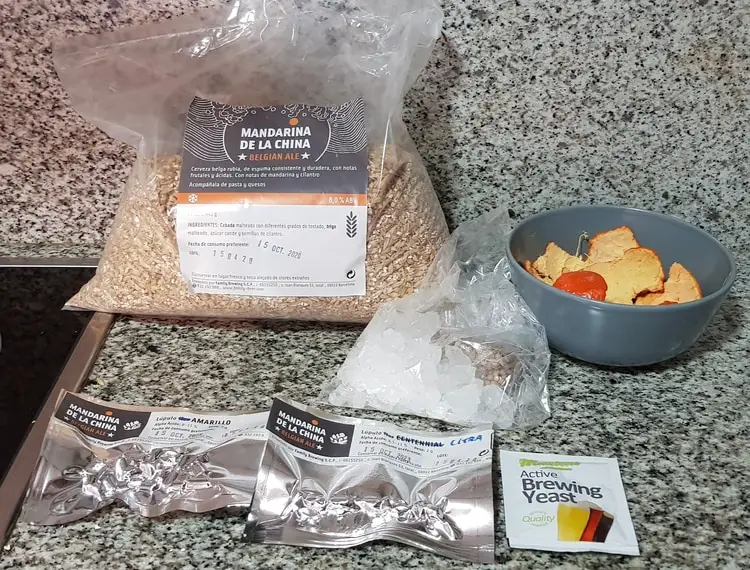
Name of the ingredient kit: Mandarina de la China
Style: Belgian Ale
ABV: 8%
IBU: 20
Targeted OG: unknown
Targeted FG: unknown
The kit contained:
- 1.4 kg (3 lbs) bag of milled grain (they don’t say which ones exactly)
- White candy sugar (maybe 100 – 200g / 3.5 – 7 ounces)
- 2 bags of hops (2g Citra AA 11% and 7g Amarillo AA 8 – 11%)
- A small bag of coriander grains
- A generic bag of yeast (don’t know which one)
Needed aside from list above:
- A big pot (at least 6 liters or 1.6 gallon)
- A strainer
- Hydrometer, thermometer, auto-siphon, tubing
- Mandarin peels
- 2 bags of ice cubes
- A fermenter
- 12 bottles (33cl / 12 oz)
Brew Day
I gathered the gear in my kitchen to start brewing.
Did I mention that I live in the city Barcelona and that my flat is small?
My kitchen is probably 10 square meters (105 square feet) and is part of my living room. There is literally no walls between my kitchen and my living room.
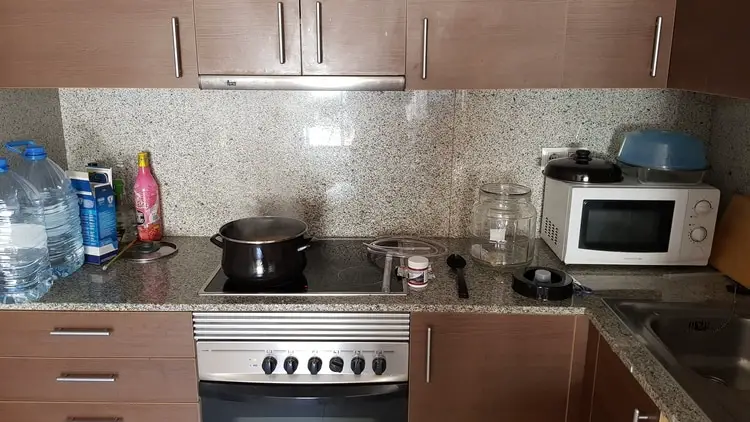
I followed the instructions of the kit and started off with the mash.
This time I had a bigger pot to avoid the boilovers, a 6-liter pot (1.6 gallons).
I used 3.5 liters (0.92 gallons) of spring water that I heated to 71° C (160° F).
During the mash, I didn’t manage to maintain a proper nor stable temperature.
But I didn’t really bother too much about it.
Didn’t think it was important anyway.
It went north of 75° C (167° F) as some pictures show… I might have thought that strike temp was mashing temp… go figure.
I left it like this, going up and down in temperatures on my kitchen stove for an hour and a half.
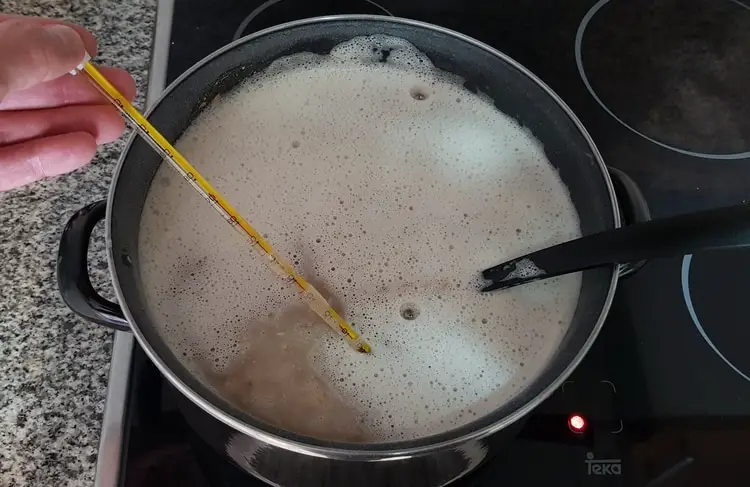
Then as the kit explained, I filtered the grain through my kitchen strainer.
I did a few runs of those back and forth as instructed.
Then I added a bit of hot sparge water through the strainer too.
Not sure if that water was really 75°c (167° F) and it surely wasn’t much water.
I didn’t measure it.
Again, I didn’t really bother.
Or let’s say I didn’t know it was important!
Also, I didn’t have anything to measure properly.
For me, I was brewing beer like I cook. Just getting a rough feel for the ingredients.
Then I boiled the wort for 1hour with my hops addition straight in the wort.
My hop additions consisted of 2g of Citra (AA 11%) at the beginning of the boil and 7g of Amarillo (AA 8 – 11%) 5min before the end.
As far as my video shows, my boil wasn’t very vigorous but at least this time I didn’t have a boilover.
Learning!
When I added the last hops 5 minutes before shutting off the heat, I added the candi sugar, the mandarin peels and the coriander.
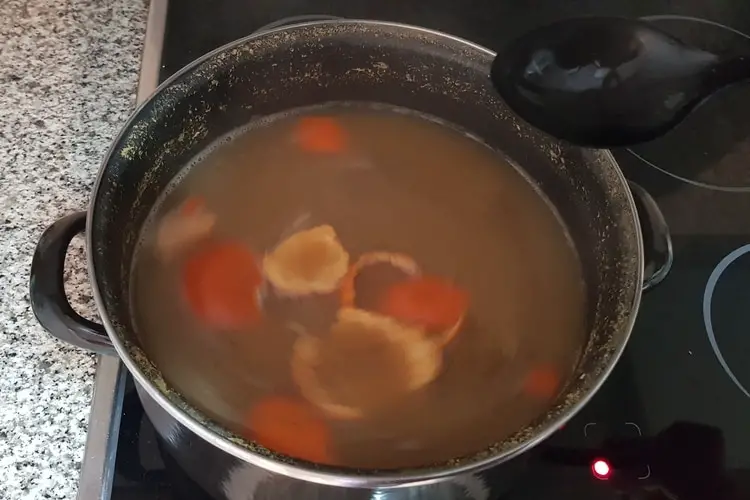
Then I did the ice bath technique in my kitchen sink to try to cool the wort fast.
I closed the lid and waited.
It didn’t cool fast.
Well, I didn’t take notes but I can remember that it lasted for an hour or so.
I didn’t check the exact pitching temperature either (but I had a thermometer this time) but it must have been somewhere around room temperature in the 20s°C.
I sanitized the fermenter and poured the wort in it. Without a strainer or any kind of filter.
So I poured bits and pieces of hops and coriander straight into the fermenter.
But I did leave most of the trub in the pot.
Hell, I didn’t want to waste any of this precious liquid!
I also realized at that time that the actual wort wasn’t taking up the whole space in the 5 liters (1.4 gallon) fermenter.
It was half full only.
Again!
But what on earth went wrong this time?
I then pitched the dry yeast. I guess the shop had put a Belgian strain but I can’t know for sure.
I closed the lid, shook iit for 15 seconds, put the airlock on and then put it away in a dark cupboard for 2 weeks.
My Original Gravity was 1.088
Brew Day time: around 4 hours.
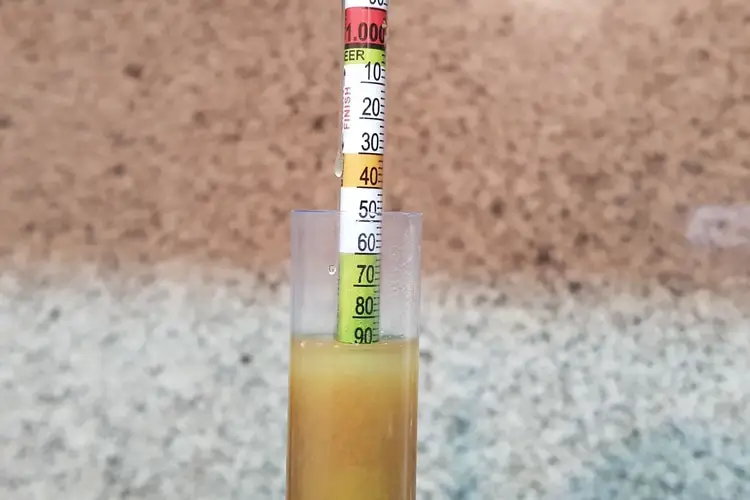
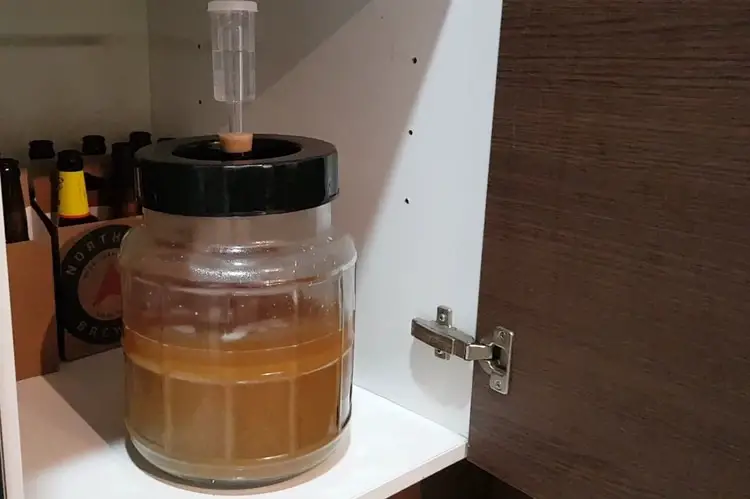
Fermentation
I just let the fermenter sit for 2 weeks to do its magic.
Temperature must have been fine, in the 20-22°C (68 – 71° F) range as it was the month of April.
Bottling
I used my new auto-siphon to transfer the beer from the fermenter into the bottles.
This time the auto-siphon worked well.
I added one teaspoon of table sugar directly into each bottle.
Around 6 grams per bottle the shop owner said.
I didn’t know this could lead to bottle explosions!
Luckily, it didn’t.
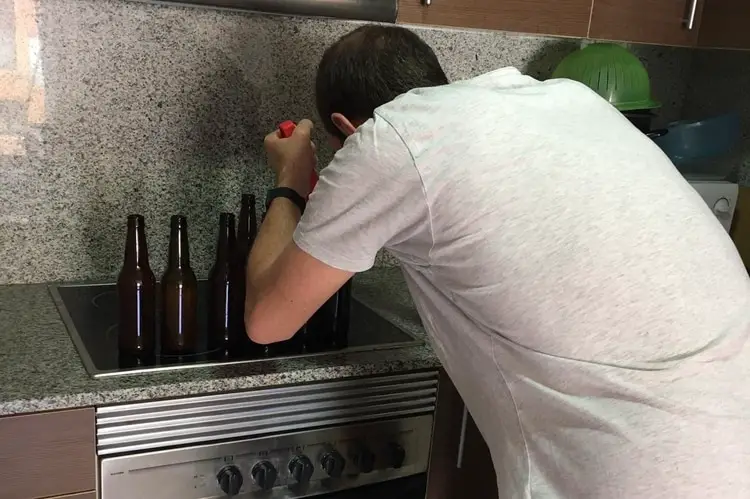
My Final Gravity was 1.025
Final ABV: 8.8%
Not too bad for brewing a big beer like this for the first time.
But it resulted in only 8 bottles instead of 12.
That is to say 2.64 litres (0.7 gallon) instead of 4 litres (1 gallon).
So much work for 8 bottles? Really? Again?
The result
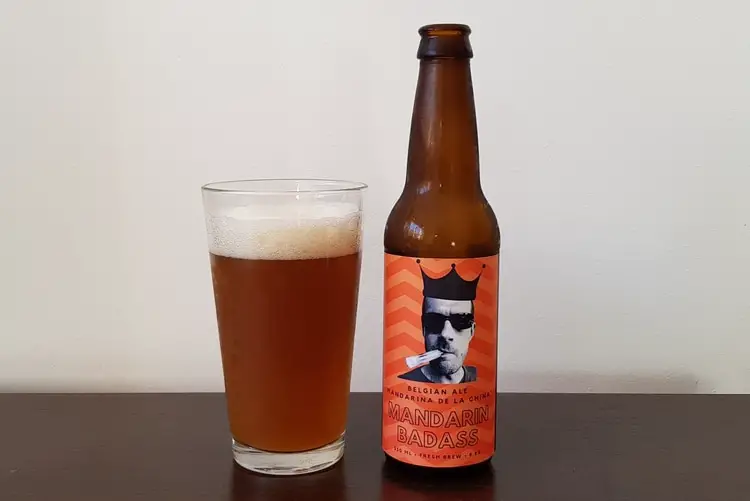
2 weeks later, I cracked open my first bottle.
Dark blond / orange-amber color and a nice head.
The beer was honestly quite good. Totally a Belgian beer. A little sweet with a malty and yeasty profile.
But in my opinion, you couldn’t really tell about the coriander nor the orange peels.
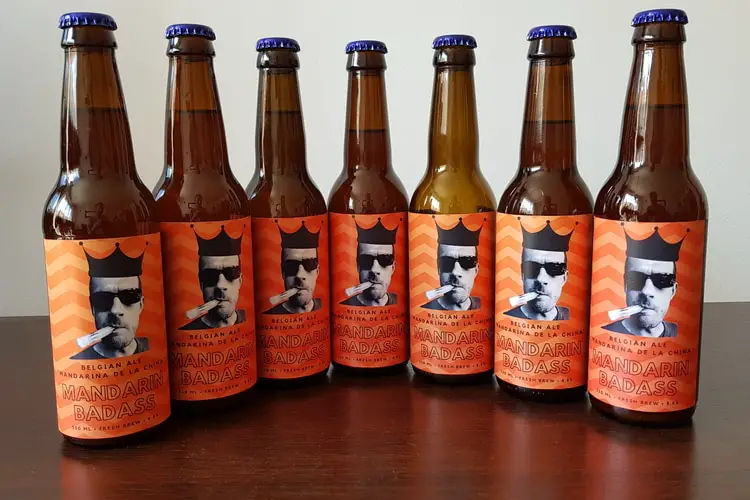
My thoughts
The whole process was a little daunting for a first all-grain batch and a second batch overall.
I had to check closely what the steps were I had to follow literally every 5 minutes.
But my shop did a great job and their instructions were actually pretty clear and simple. They had a helpful video explaining the process on their website too.
But why did I get only 8 bottles instead of 12 bottles?
I think I just didn’t measure properly the water needed for the boil and the sparge.
Actually, I didn’t measure them at all. I just did it roughly.
I probably underestimated them.
I was maybe too casual on that one.
The instructions stated that I needed to yield 5 liters before the boil, but I didn’t really have a way to know if I had 3, 4 or 5 liters in my pot…
If I had sparged more, I surely would have ended up with a beer with a lower ABV.
So in the end, I probably extracted less sugar from the grain than I should have, but my wort was more concentrated. And wait a minute, was my mash efficient?
All’s well that ends well.
For a first all-grain brew, not bad.
I call it a success.
Notes to improve next brews
- Measure the quantity of strike water and sparge water precisely
- Check closely the temp of the mash and don’t let it go too far in either direction (no more than -3° c or +3°c)
- Take the temperature of the cooling wort and make sure to pitch at the right temp
- Put measurement marks on my brewing pot to know when I reach the proper yield.

Big D did fine his first time around with all-grain. Very adventurous for a second brew. He kept the wort in the kettle and therefore also the hops.The mash was all over the place. The temp must stay constant: either between 154-158F (67 – 70° C) or 149-154F (65 – 67 ° C). You cannot have both. Go too high, you kill the low temp enzymes, go to low, the high temp enzymes deactivate. Must be exact with mash and sparge water amounts.
Final gravity was a little high, may have leached some proteins and dextrins from a high-mash temp.
The spices could go in at knock out, or even in the fermenter for a little more flavor.
I didn’t go all-grain until maybe my 15th batch!? Also, I learned first by helping Sam brew his first all-grains so had a leg up on my first all-grain disaster…I mean perfectly executed batch.
Hats off Dorian.
